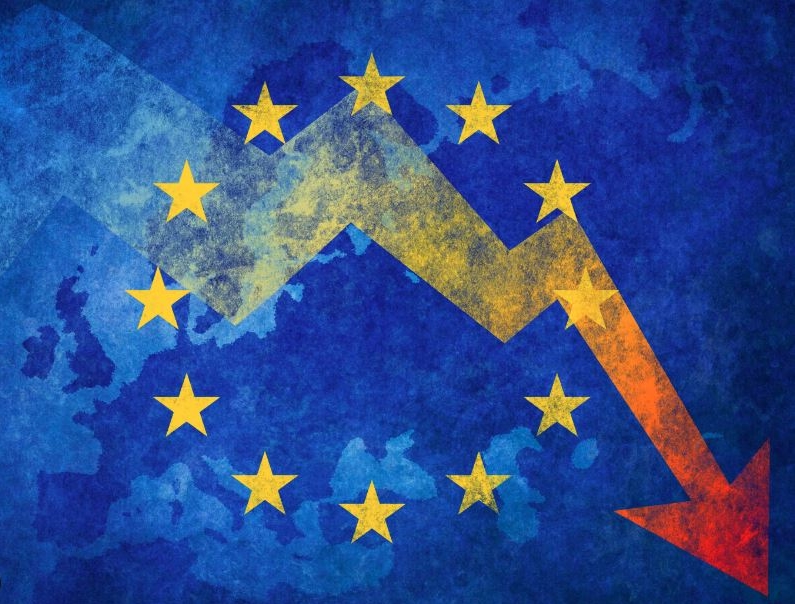
The crisis of the European social and political model comes with serious consequences for fiscal and financial stability, stresses the scientific staff at Eurointelligence.
This is a very ominous assessment of Europe's future by analyst Wolfgang Monschau, who suggests that the next financial crisis is very close. A crisis will start in France and Italy.
A very ominous assessment of the future of Europe
The task force explains that it has generally been measured in its warnings about financial crises, and highlights that the main exception was the global financial crisis and its “cousin,” the eurozone sovereign debt crisis.
But nearly 15 years later, the think tank indicates that it sees another economic crisis in Europe: a crisis of the European social and political model with dire consequences for fiscal and financial stability.
According to European intelligence The biggest sign is overcoming the fiscal deficit in France and Italy, which are more than 7% and more than 5% for 2024, respectively. These numbers are a symptom, not a cause. Behind these challenges lies the lack of economic development necessary to maintain the European social model.
Germany's fiscal policy is not very different from that of France or Italy, and yet Germany suffers from precisely the same problem. The collapse of Nicolae Ceausescu's repressive debt-free regime in Romania should serve as a lesson that it is not the size of debt that determines debt sustainability.
It is, in a broad sense, the ability of a state to provide prosperity and contentment while maintaining its ability to meet its obligations. Politics is the art of keeping these three balls constantly in the air. The European model was fueled by oligopolistic industrial enterprises, which were largely supported by the state through regulations that tilted the playing field in its favour. The German car industry is a classic example, but everyone has done it. The service sector was mainly located in the service sector: state-owned banks providing soft loans to industrial enterprises, and repair shops for industrial products, such as automobile services.
These industries enjoyed large profit margins due to the monopolistic or oligopolistic markets in which they operated, as well as high barriers to entry. This system fed into the entire social policy architecture – in the form of fiscal transfers and labor market policies to ensure that the spoils of the model flowed evenly. A notable feature of this system is its long-term nature.
The European Union, governments, industry and universities have organized research that has fed into this model. After the end of the Cold War, two other factors supported this model: a significant decline in defense spending, in some cases by several percentage points of GDP, and the rise of globalization.
Barriers to entry have collapsed
What is killing this model now is technological change and geopolitical fragmentation. Of the two, Eurointelligence considers the first to be the more important. More and more functions in our lives that were previously purely mechanical processes are today fully or partially digital. Barriers to entry have collapsed. China has gone from zero to a global leader in electric vehicles. European companies no longer generate enough profits to fuel the social model – and to fund long-term research.
The European poll's heavy bias towards incumbents affects its weight. It's not about public sector versus private sector. Government intervention has played a huge role in the development of the digital industry. Picking winners is still possible. It is not surprising that Europe has very few technology companies. In short, Europe's old technology-based oligopoly model no longer works in the digital world. After all, there are quite a few attempts by the EU to prevent technological developments through regulation. But this is a way to treat symptoms, not causes.
The European model has become economically unsustainable
After multiple global shocks this decade, the consequences of technological decline in Europe translate into lower potential growth rates. Italy came first. Its productivity growth has been almost zero since joining the euro. Productivity growth in the UK declined after the global financial crisis and has never recovered since. Productivity growth in Germany is unlikely to recover, even if it does in the economic cycle. The German Council of Economic Experts expects potential growth of about 0.5% by the end of the decade.
With productivity growth so low, the European model has become economically unsustainable. Not surprisingly, the political system is fragmented everywhere. We are facing a financial crisis caused by a combination of low productivity and political gridlock. Technology is the main reason for the decline. And geopolitics is what accelerated the matter. And the solutions that EuroIntelligence has been advocating over the years – common financial capacity, capital markets union, and joint defense procurement to compensate for the rise in defense spending. But it's further away than ever. If one of these parameters does not change, a financial crisis is a very likely scenario, EuroIntelligence concluded.
Greece should not have been allowed to join the European Monetary Union
France and Italy are currently major disasters on a budget deficit basis. Neither Italy nor Greece should have been allowed to enter the European Monetary Union (Eurozone). Greece's debt-to-GDP ratio is 170%. The target is 60%.
On February 10, the European Union agreed to more flexible fiscal rules to reduce debt and boost investment. The latest overhaul of the rules, known as the Stability and Growth Pact, came after some EU countries racked up high debt, as they increased spending to help their economies recover from the pandemic, and as the bloc announced ambitious green, industrial and defense targets.
The revised rules allow heavily indebted countries to reduce their debt at a rate of 1% per year if it is above 90% of GDP and by an average of 0.5% per year if debt is between 60% and 90% of GDP. Countries with deficits exceeding 3% of GDP would have to halve this deficit to 1.5% in periods of growth, which would create a buffer for difficult times. Defense spending will be taken into account when the Commission assesses a country's high deficits, a consideration prompted by Russia's invasion of Ukraine. The new rules give countries seven years, instead of the previous four, to reduce debt and deficits starting in 2025.
Note that the EU can amend the implementation but not the main objectives of the Stability and Growth Pact without unanimous agreement and a new treaty.

“Avid problem solver. Extreme social media junkie. Beer buff. Coffee guru. Internet geek. Travel ninja.”





More Stories
They extinguish the “little gold mines” of the glorious past
It’s the hen’s fault – why brown eggs are more expensive than white eggs
The opening of Nammos in Cannes and 7 other culinary creative offerings of the season will be discussed